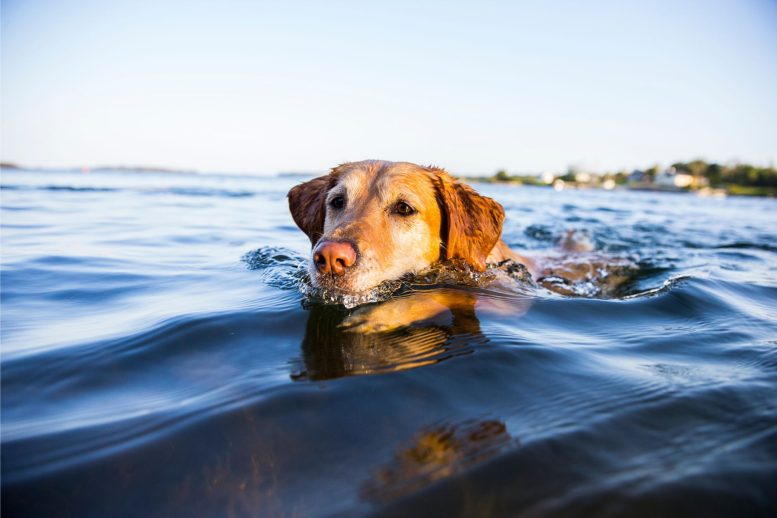
UC Riverside scientists have discovered the potentially fatal liver fluke parasite, Heterobilharzia americana, in the Colorado River in California, a first for the region. Originating from research on local canine infections, the finding highlights the unexpected presence of parasite-carrying snails. Dog owners are urged to be cautious and watch for symptoms of infection. While the parasite can cause swimmer’s itch in humans, it poses no significant health risk and is unlikely to contaminate drinking water due to effective purification methods.
Experts caution dog owners against allowing their pets to swim in the Colorado River.
Scientists at UC Riverside have verified for the first time the presence of a potentially deadly dog parasite in a section of the Colorado River that flows through California.
The parasite, Heterobilharzia americana, is a flatworm commonly referred to as liver fluke. Previously found almost exclusively in Texas and other Gulf Coast states, it has never been reported this far west. The worm can cause canine schistosomiasis, an illness that impacts the liver and intestines of dogs.
“Dogs can die from this infection, so we are hoping to raise public awareness that it’s there,” said UCR nematology professor Adler Dillman. “If you’re swimming in the Colorado River with them, your pets are in peril.”
After learning about cases of the infection in local dogs, Dillman assembled a research team and headed to Blythe, a border town east of Joshua Tree National Park in Riverside County, where the sick dogs had all spent time swimming in the river.
Research Findings
The infection is driven by the presence of a snail that transmits the worm. The research team collected more than 2,000 snails from the banks of the river. A paper published this week in the journal Pathogens describes how the team used DNA to confirm the identity of both the snails and the flatworm.
“We actually found two species of snails that can support H. americana in the river in Blythe, and we found both snails actively shedding this worm,” Dillman said. “Not only was it a surprise to find H. americana, we also did not know that the snails were present here.”
After transforming itself inside one of the snails, the worm ventures out with the goal of finding a mammal to infect. In this stage, it can only survive on its own for about 24 hours. If a dog or a raccoon is in the water, or drinking, then it gets infected.
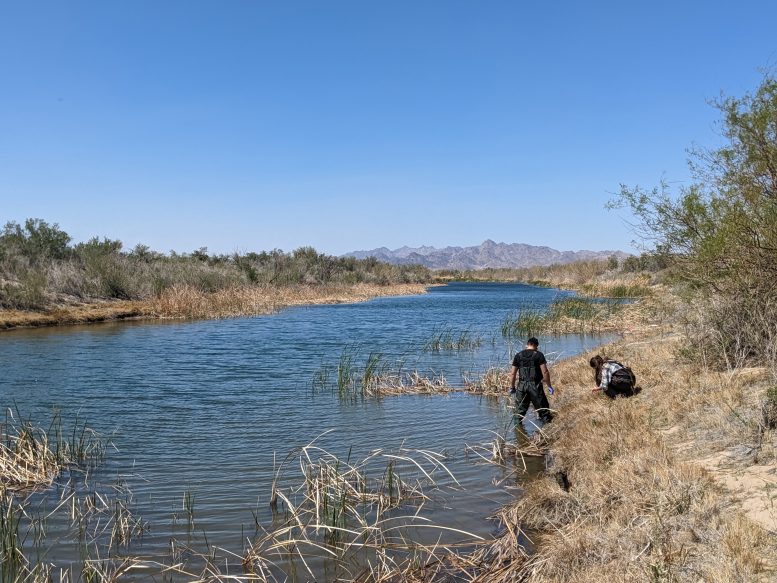
UC Riverside researchers collecting samples from the Colorado River in Blythe. Credit: Adler Dillman/UCR
“It gets into the veins of the intestinal lining, and that’s where it develops into an adult and mates,” Dillman said. “The presence of the adults in the veins isn’t the problem. It’s the eggs that get into the lungs, spleen, liver, and heart. The immune system tries to deal with it, and hard clusters of immune cells called granulomas form. Eventually, the organ tissues stop functioning.”
Once infected, it can be several months before the worst symptoms of the illness appear. Since 2019 in California, 11 dogs in three counties have been confirmed with this disease, and one has died. Health officials hope that with awareness they can prevent further infections and deaths.
“Symptoms start gradually with a loss of appetite, and eventually include vomiting, diarrhea, profound weight loss, and signs of liver disease. If your dog has these symptoms after swimming in the Colorado River, it’s a good precaution to ask your veterinarian for a simple fecal test,” said Emily Beeler, a veterinarian with the Los Angeles County Department of Public Health.
“Treatment typically involves the use of multiple medications and close monitoring of the dog by a veterinarian,” Beeler said.
It is important to note that H. americana is not known to be capable of causing disease in humans. “It can cause swimmer’s itch, a red rash where it penetrates human skin. But it’s not able to cause infection,” Dillman said.
Additionally, Dillman hopes to allay concerns that the parasite could be contaminating urban drinking water. “Compared to other pathogens these worms are fairly large. They can easily be filtered out with common water purification strategies,” he said. Though there is no cause for concern about contamination of water sources, drinking the water directly is still inadvisable.
“You have viruses, bacteria, and other parasites such as Giardia in rivers,” Dillman said. “Nobody should be drinking straight out of the river, and that has nothing to do with this particular parasite.”
Reference: “Canine Schistosomiasis in the West Coast: Heterobilharzia americana in Two Natural Intermediate Hosts Found in the Colorado River, California” by Anil Baniya, Connor J. Goldy, Jiranun Ardpairin, Perla Achi, Yu Wei Chang, Rose C. Adrianza, Apichat Vitta and Adler R. Dillman, 12 March 2024, Pathogens.
DOI: 10.3390/pathogens13030245

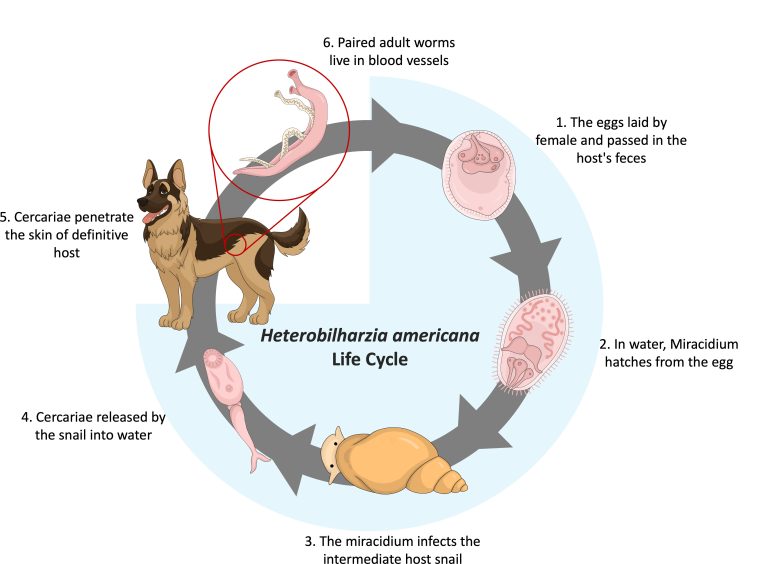
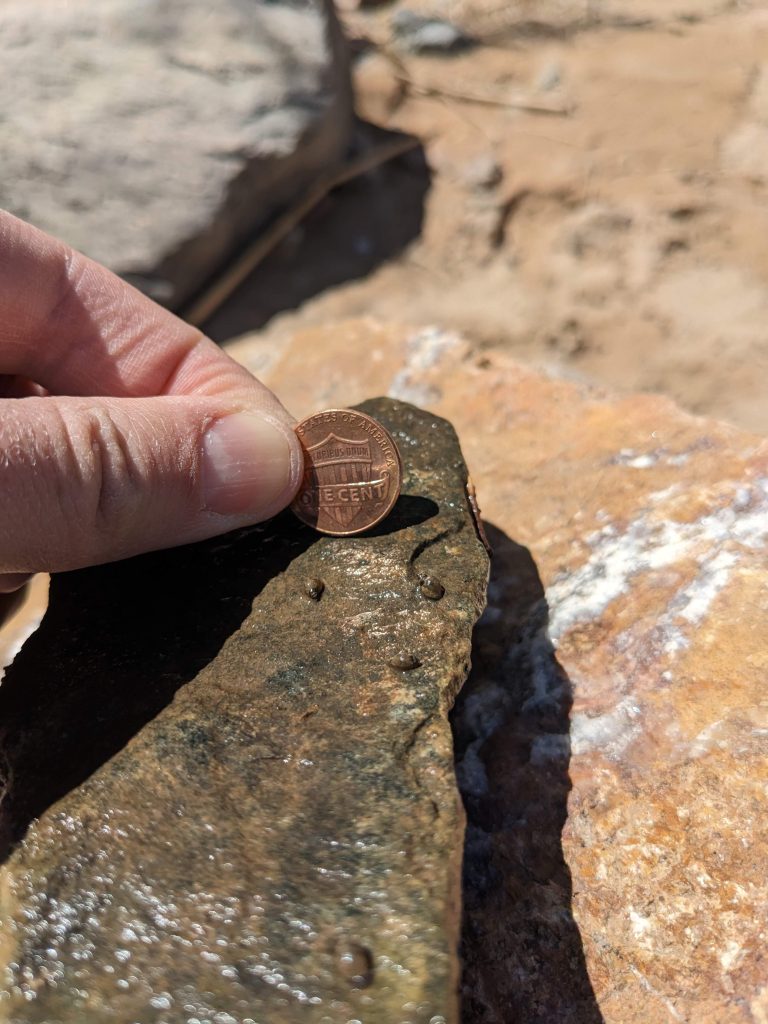






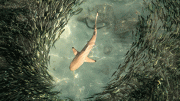

Be the first to comment on "Pet Owners Beware: Dog-Killing Parasite Discovered in Southern California"